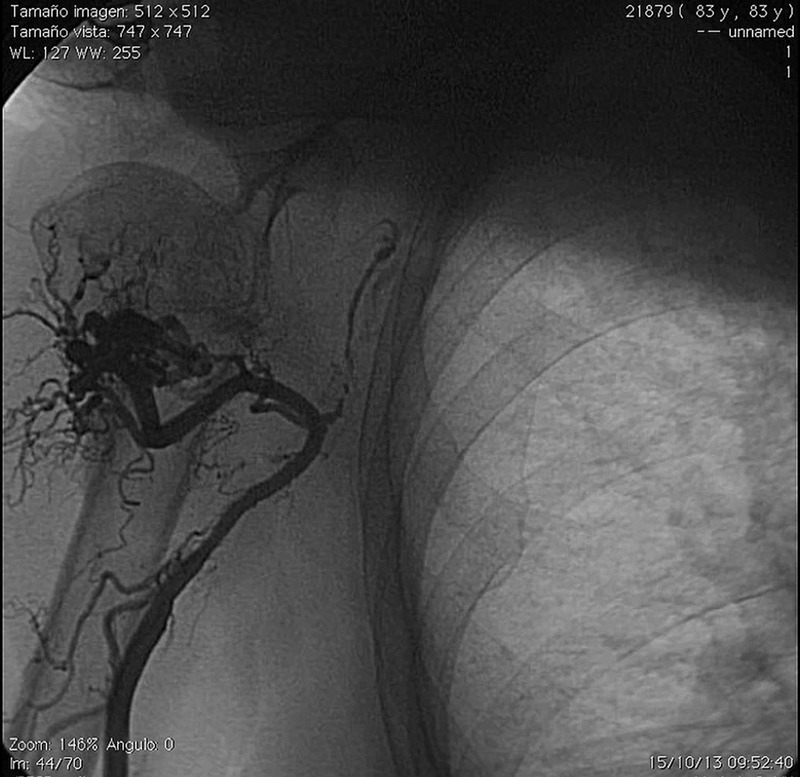Description
An 83-year-old woman with a suspected coronary atherosclerotic disease in the setting of severe left ventricular dysfunction underwent a coronary angiography at our institution. Prior to catheterisation, Allen test was performed, which showed normal bilateral circulation. Using a 5 Fr catheter sheath through the right radial artery, we found a guide wire blockage at the axillary artery level. Recanalisation of prior arterial occlusion with collateral circulation was found during the angiography (figure 1 and video 1). Deeper background investigations were performed discovering a right humerus neck fracture that occured 10 years ago and was conservatively treated. Radial access is a well-known arterial access to perform coronary catheterisation in which the main cause of access failure is radial spasm.1 In this case, we show an extremely rare cause of access failure secondary to a traumatic injury of the axillary artery.2 Collateral flow development allowed distal perfusion of the subsequent arteries, masking such injury during the Allen test. In our opinion, anamnesis is always an important tool to avoid any medical complication and specifically trauma injuries must always be considered. We recommend performing an angiography in the case of any difficulty during catheterisation. It is important to avoid any damage in such an injured artery, otherwise it would lead to devastating consequences.
Figure 1.

Radial artery blockage and collateral flow.
Angiography of the radial artery.
Learning points.
Prior anamnesis is vital in order to avoid artery access complications.
Allen test does not discard artery injuries with collateral flow prior to the radial artery.
Axillary artery injury is a possible cause to radial access failure.
Footnotes
Contributors: LA-A wrote the first version of the manuscript and the questions. MR-E performed the supervision of the manuscript, gave expert opinion, looked for the images and corrected the final version. JHA supervised all the process, gave expert opinion and gave final approval for the version of the manuscript.
Competing interests: None.
Patient consent: Obtained.
Provenance and peer review: Not commissioned; externally peer reviewed.
References
- 1.Bernat I, Horak D, Stasek J, et al. ST elevation myocardial infarction treated by RADIAL or femoral approach in a multicenter randomized clinical trial: the STEMI-RADIAL trial. J Am Coll Cardiol Published Online First: 6 Nov 2013. doi:10.1016/j.jacc.2013.08.1651 [DOI] [PubMed] [Google Scholar]
- 2.Byrd RG, Byrd RP, Jr, Roy TM. Axillary artery injuries after proximal fracture of the humerus. Am J Emerg Med 1998;16:154–6 [DOI] [PubMed] [Google Scholar]
Associated Data
This section collects any data citations, data availability statements, or supplementary materials included in this article.
Supplementary Materials
Angiography of the radial artery.


